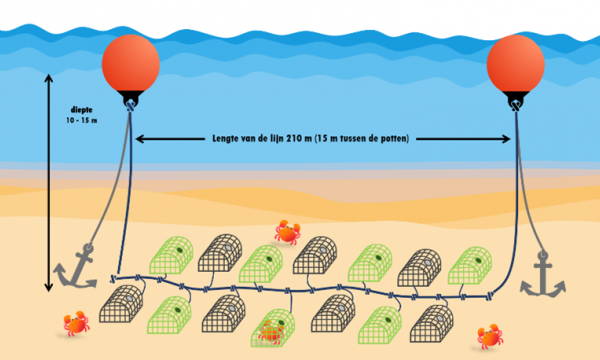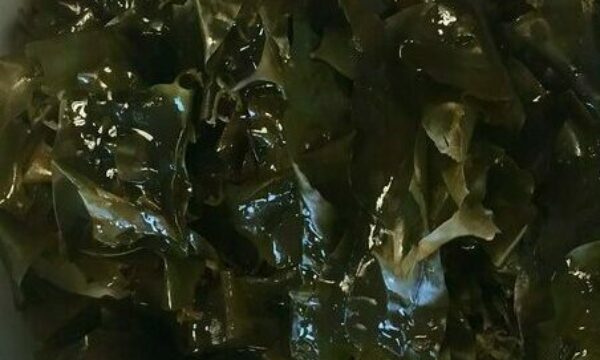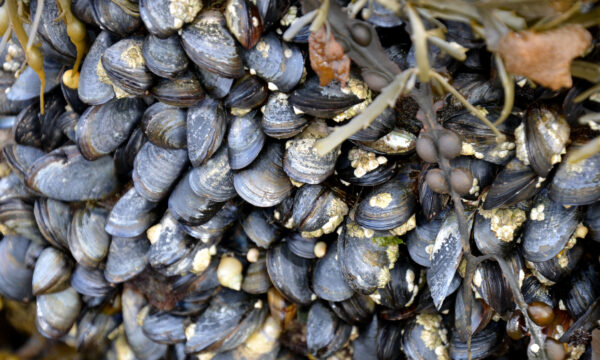Press release Microalgae as natural flavoring in plant-based fish and shellfish alternatives, as well as in pastries: tasty, safe and sustainable
Microalgae such as Rhodomonas salina and Tetraselmis chuii are particularly suitable as natural flavoring agents for developing plant-based seafood alternatives. Other microalgae such as Dunaliella salina can enhance the flavor and aroma palette even in dishes that do not hint at the sea, such as pastries. They are also safe, nutrient-rich and sustainable to cultivate. Making small adjustments to the cultivation method, taking into account post-harvest storage conditions and choosing the appropriate drying method can further improve their flavor. This is evident from the doctoral research of Bert Coleman (ILVO and KU Leuven). As part of the European ValgOrize project, he mapped the composition and flavor and aroma profiles of various microalgae species. With this, food companies can get to work.
Due to the growing world population, global demand for food will increase some 50-70% by 2050. On land, expansion opportunities are limited, but the sea still has potential. 70% of the globe consists of salt water but this resource is still largely underutilized. At the same time, there is growing awareness of overfishing and concerns about marine pollution. Growing algae in a controlled, food-safe environment, in salt water and without having to take scarce fertile land, seems a logical growth path.
Europa lags behind
Algae are already widely produced and consumed worldwide, but Europe is lagging behind. Barely 1% of seaweed production takes place in Europe. For microalgae, the share is even much smaller, with only a few cultivation facilities on an experimental or pilot scale. Also in terms of consumption, seaweeds and especially microalgae are still a niche product in Europe. However, both seaweeds and microscopic microalgae are nutritionally very valuable. They contain large amounts of proteins, essential amino acids, omega-3 fatty acids, minerals and vitamins.
Improvements due to research: taste potential of microalgae described
The key question for the European food industry in getting started with algae as flavoring agents: how do they affect the taste and smell of our products? Bert Coleman mapped their flavor potential in his doctoral research. This showed that certain microalgae species, such as Rhodomonas salina and Tetraselmis chuii, can make significant flavor and aroma contributions to plant-based seafood alternatives. In turn, other microalgae such as Dunaliella salina can surprisingly add flavor to other non seafood-related dishes such as pastries.
We have drawn out flavor profiles for each species of algae studied. A food producer can consult those profiles and immediately estimate which algae would fit best with the product, giving it a nutritional and taste boost."
Effect of cultivation and processing on flavor characteristics described
Coleman's research also showed that cultivation conditions and processing techniques effectively influence the flavor properties of microalgae. The more nitrogen in the culture medium, the higher the flavor intensity of the microalgae. It gives them the typical "umami taste. Drying algae immediately after cultivation with the right technique also gives better taste. With these insights, producers can optimize their processes.
Effect of composition on taste and smell described
To assess the taste of the algae, Coleman used chemical analysis and a professionally trained taste panel. Chemically, he analyzed the volatile organic compounds important for odor and aroma and examined the free amino acids, which determine umami taste. He juxtaposed that with the findings of the taste panel that scored the various microalgae for all flavor and odor properties. Coleman was able to call on ILVO's lab facilities in Melle for this.
Through this combination of chemical analyses and taste panel data, we now know which chemical molecules of the alga affect its flavors (taste and smell) in what ways. This is interesting info for monitoring during microalgae production and for recipe development by food companies.
Novel Food law and high prices throw a spanner in the algae works (for now)
Despite these great results, there are also challenges. Few microalgae species have yet been approved for human consumption under European Novel Food legislation. The approval process is expensive and lengthy, but the queue of microalgae in procedure is growing steadily. To introduce algae as a full-fledged flavoring agent for their use in the development of plant-based fish or shellfish alternatives or other products, the price in Europe also still needs to come down. Finally, follow-up research is needed to analyze more algae species, further optimize cultivation conditions, engage in consumer research and further product development, develop a realistic plan for scaling up with quality maintenance and lower production costs, etc.
There is still work to be done but I am optimistic. There's been a huge boost in interest from the market and from new research and initiatives in recent years that are working to get these healthy, sustainable algae on our plates.
More info
Bert Coleman's doctoral research was conducted as part of the European ValgOrize project coordinated by ILVO. It also looked at possible valorizations of the by-products of algae production, for example in chicken feed.
Also see: www.valgorize.eu
Download photos



